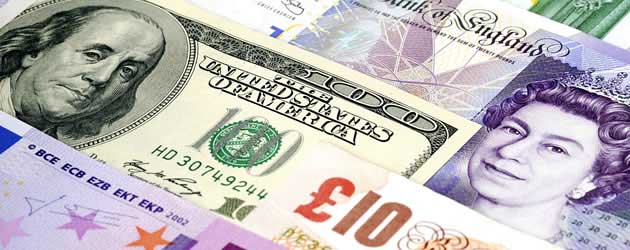
Pound Sterling
The Pound began the week making gains against the Euro as an industry report showed that UK home sellers raised asking prices in April for a fourth consecutive month as a shortage of properties nationwide caused property values to rise. Against the commodity based currencies the Pound strengthened following disappointing data out of China and the US.
Midweek Sterling weakened to its lowest-level in a month against the Euro before the Bank of England published the minutes of its April policy meeting, it then fell to its lowest level since 15th March after data showed that UK unemployment rose at its fastest pace in more than a year and wage rises slowed.
US Dollar
The ‘Greenback’ strengthened against the majority of its commodity based peers after China posted weaker-than-expected data. The world’s second largest economy saw its recovery unexpectedly stumble as its growth rate eased to 7.7%. Economists had been forecasting a rise of 8%. Negative data out of the US added to commodity woes as US consumer sentiment and retail sales both posted an unexpected decline.
Midweek the Dollar weakened against commodity based currencies such as the South African Rand and New Zealand Dollar after investors sought out higher-yielding assets, and as gold and U.S stocks made gains. Against the Euro, the Dollar tumbled to a seven-week low after two Federal Reserve Bank presidents said that the US economy still requires further monetary stimulus. The currency was also weighed down by data that showed that inflation dipped unexpectedly in March.
On Friday the currency weakened against the Euro, reversing gains after a report showed that manufacturing in the Philadelphia region expanded at a slower pace than economists had been predicting. The Federal Reserve Bank of Philadelphia’s general economic index fell to 1.3 in April from 2 the prior month. Readings greater than zero signal expansion. Economists had been expecting a rise to 3.
Euro
The Euro started to weaken against the US Dollar and the Pound on Monday but strengthened against commodity based currencies. The declines came as investors sought safe-havens following disappointing data out of China and the US. Continuing worries over the Eurozone economy also continue to weigh upon the single currency.
Midweek the Euro gained against most of its peers, briefly rising to a seven-week high against the US Dollar. On Friday the Euro then weakened against the Pound as economic data continues to be dismal for the single currency region. European car sales tumbled, German production slowed and the ongoing presidential election in Italy has caused uncertainty on the market. The currency was also weighed down by comments made by Bundesbank chief Jens Weidmann who poured cold water on speculation that the Eurozone had overcome the worst of the Eurocrisis. He said that the region will continue to struggle for at least another decade.
Australian Dollar
The ‘Aussie’ fell sharply against the majority of its peers on Monday, following China’s release of disappointing GDP data. The currencies sharp decline highlights Australia’s hyper-sensitivity to events in its biggest trading partner. The movement caused economists to argue that it increases the likelihood of a further interest rate cut this year.
The currency then fell to a one-month low against the US Dollar as the bombings in Boston and the disappointing data out of China continued to weigh on market sentiment.
On Thursday the ‘Aussie’ hit a five-week low against the US Dollar as the weak Chinese data released at the start of the week continues to drag down upon the currency.
New Zealand Dollar
The ‘Kiwi ‘followed its Australian relation downward this week and began trading sharply lower following China’s weaker-than-expected GDP data. The ‘Kiwi’ recovered some of its losses after the price of gold and silver fell and as the bomb attacks in Boston caused concern in the markets. The ‘Kiwi’ was little changed as investors cashed in gains as they grow uncertain over the direction of the global financial markets.
Canadian Dollar
The ‘Loonie’ began the week falling sharply against the US Dollar after the currency followed the trend of commodity based assets making a sharp decline. The data from China and the decline in US retail sales added to its decline.
It then slid further against its US relation due to a massive sell-off in gold and as disappointing Chinese economic data continued to weigh upon commodity based currencies. The bomb attacks in Boston also weighed it down. It then made gains against the US Dollar after gold prices rose and after Statistics Canada said that manufacturing sales increased by 2.6% to just under $50 billion in February, its largest increase since July 2011. The currency was also supported by a rise in the price of copper, one of Canada’s biggest exports.
As the week drew to a close the currency fell to its weakest-level in a month against its US relation after the Bank of Canada reduced its growth forecast for the year and said that weakness in the economy will last for at least the next two years. The continuing fall in the price of the country’s biggest export of crude oil is also weighing down upon the currency.
The ‘Loonie’ slumped close to a one-month low against a number of its peers as economists wait and see what the G-20 comes up in regards to jump-starting economic growth.

Comments are closed.